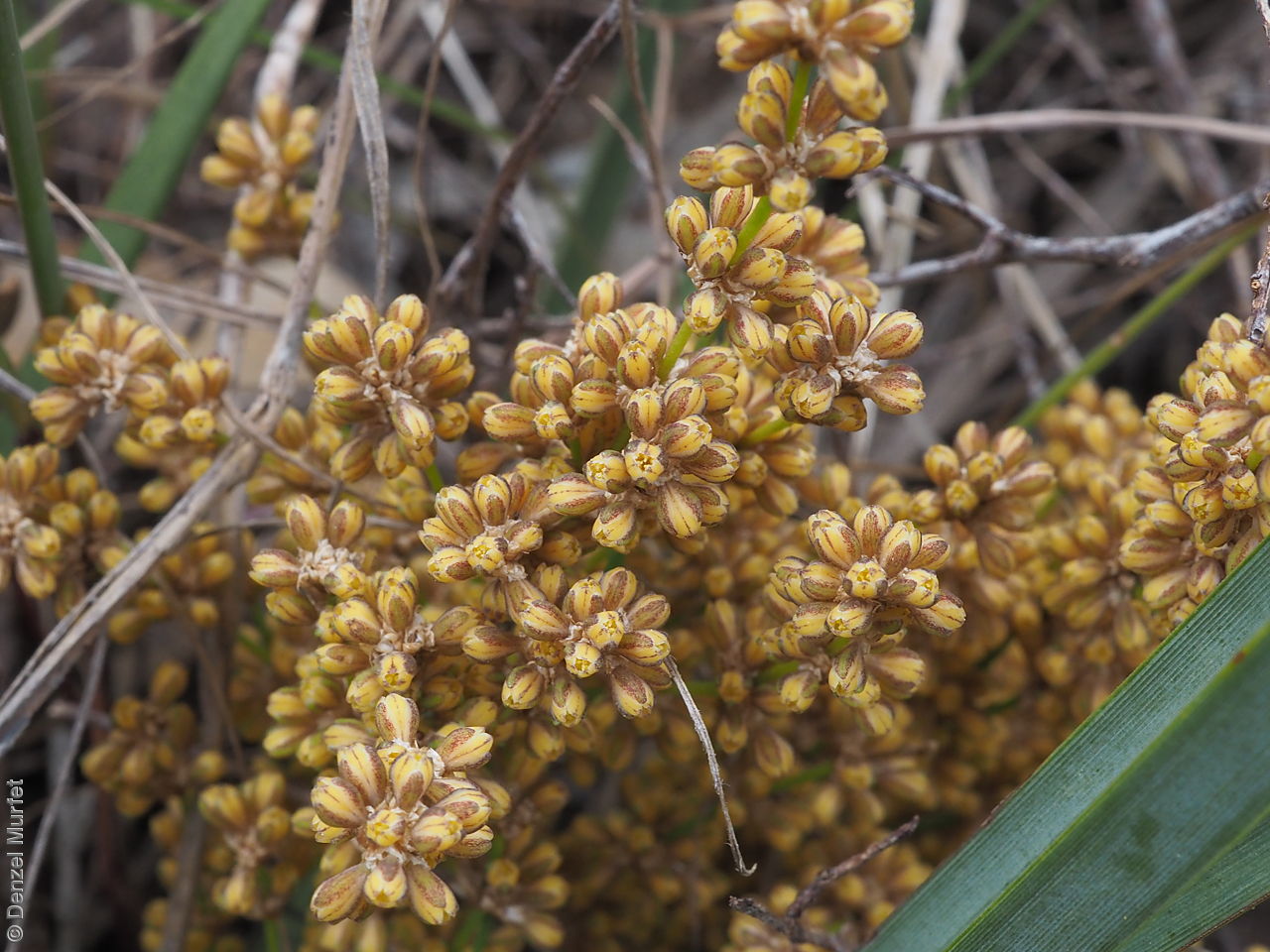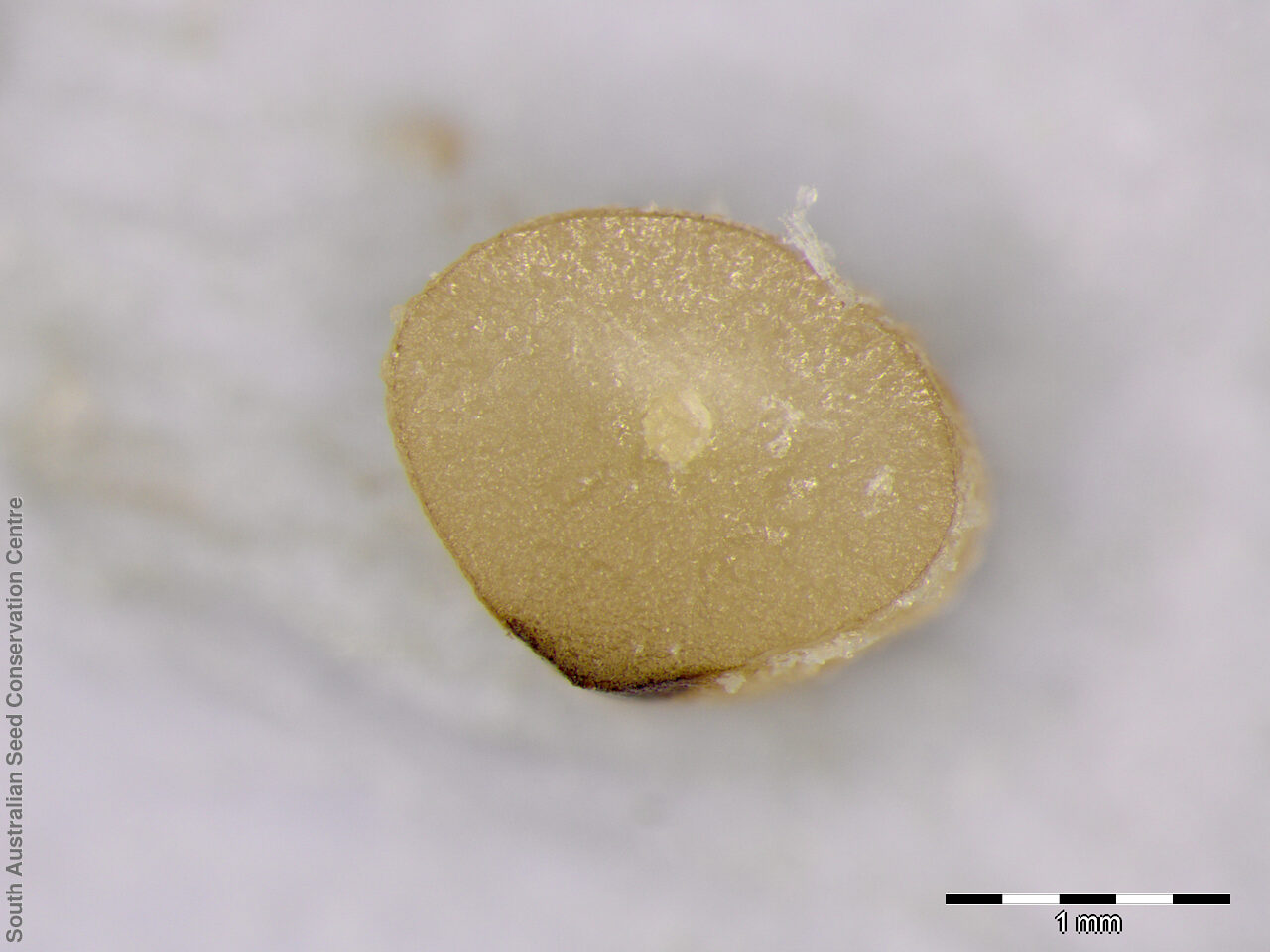












Botanical art
Prior names
Xerotes dura
Lomandra multiflora
Lomandra dura
Common names
Iron-grass
Hard Mat-rush
Etymology
Lomandra, from the Greek 'loma', meaning edge, border or fringe and 'andros', meaning a male, alluding to the circular margin of the anthers in some species. Multiflora, from the Latin 'multus', meaning many and 'floris', meaning flower. Dura from Latin meaning hard, tough or durable, referring to the tough bracts.
Distribution and status
Endemic to South Australia and found mainly in the Flinders and Mount Lofty Ranges, growing in open woodlands and temperate grasslands. Native. Common in South Australia.
Herbarium regions: Lake Eyre, Flinders Ranges, Eastern, Eyre Peninsula, Northern Lofty, Murray, Yorke Peninsula, Southern Lofty, Green Adelaide
NRM regions: Adelaide and Mount Lofty Ranges, Eyre Peninsula, Northern and Yorke, South Australian Arid Lands, South Australian Murray-Darling Basin
AVH map: SA distribution map (external link)
Plant description
Iron grass with rigid glaucous leaves to 60 cm long and 4 mm wide. Male and female flowers occurring on the same plant (monoecious). Male flowers with pedicels to 4 mm long; females sessile. Clusters of flowers grow along an erect spreading panicle to 30 cm long. Fruits are ovoid to globular capsule to 6 mm across; dark purple-black when mature. Seeds are yellow to brown, rounded wedge-shaped seed to 5 mm long and 3 mm wide. Seed embryo type is linear, underdeveloped.
Seed collection and propagation
Collect seeds between December and January. Collect mature fruits, turning purple-black with a hard seed inside, or when they are starting to split. Place the capsules in a tray and leave to dry for one to two weeks, then rub the capsules gently by hand to dislodge the seeds. Use a sieve to separate the unwanted material. Store the seeds with a desiccant such as dried silica beads or dry rice, in an air tight container in a cool and dry place. From three collections, the seed viability was high, at 100%. This species has morpho-physiological dormancy and can take several weeks to germinate. Germination was enhanced by treatment with diluted smoke water.
| Location | No. of seeds (weight grams) | Number of plants | Date collected | Collection number Collection location | Date stored | % Viability | Storage temperature |
|---|---|---|---|---|---|---|---|
| MSB | 3,100 (44.58 g) | >50 | 10-Jan-2006 | DDC1421 Northern Lofty | |||
| BGA | 2,300 (28.15 g) | 12 | 4-Jan-2006 | DJD336 Southern Lofty | 9-Aug-2006 | 100% | -18°C |
| BGA | 3,900 (40.69 g) | 250+ | 31-Dec-2005 | KHB41 Southern Lofty | 10-Aug-2006 | 100% | -18°C |
| BGA | 2,900 (49.2 g) | 8-Nov-2014 | JRG152 Southern Lofty | 1-Nov-2017 | 100% | -18°C |
Number of plants: This is the number of plants from which the seeds were collected.
Collection location: The Herbarium of South Australia's region name.
% Viability: Percentage of filled healthy seeds determined by a cut test or x-ray.